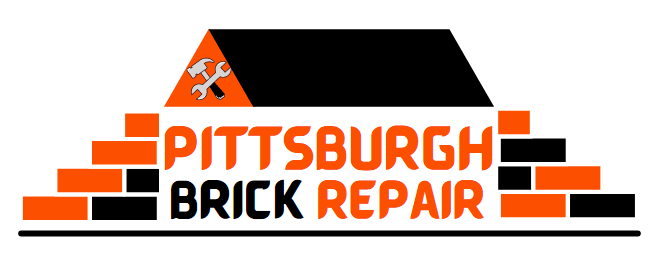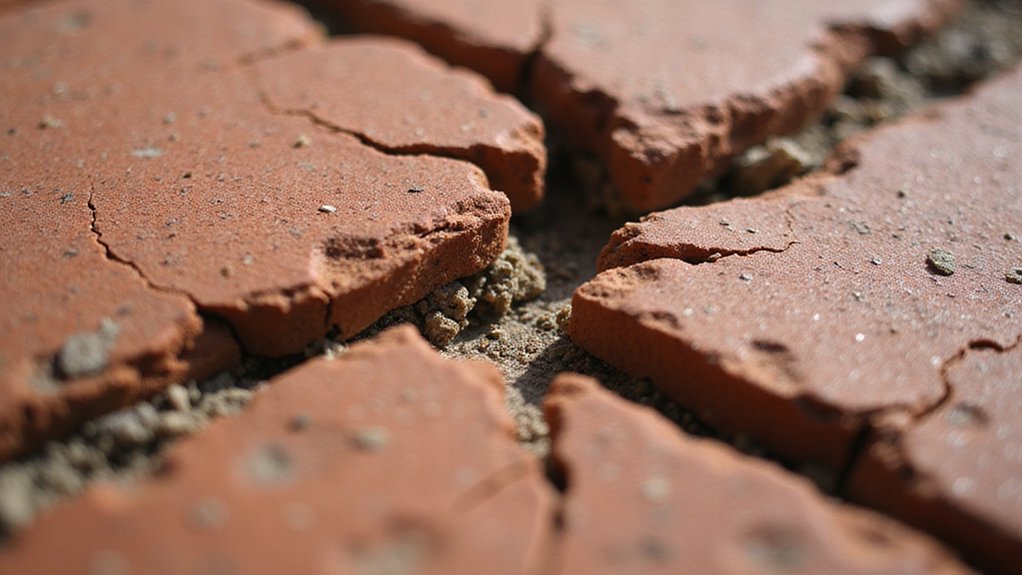Have you ever wondered why the sturdy bricks of your home develop unsightly cracks? These fissures aren’t just cosmetic concerns—they’re warning signs of potential structural issues. From temperature fluctuations to ground movement, multiple factors can compromise your brick walls’ integrity. Understanding these causes isn’t just about aesthetics; it’s about protecting your most significant investment. Curious to reveal the secrets behind brick
Thermal Expansion and Contraction
Almost every brick structure experiences the silent, gradual stress of temperature changes. When outdoor temperatures swing rapidly, your bricks expand and contract, creating internal pressure that can lead to cracks.
Freeze thaw cycling particularly damages masonry, causing microscopic fractures that grow over time. If you live in regions with dramatic seasonal shifts, your building is more vulnerable to thermal stress.
Understanding these temperature-related dynamics helps you anticipate and prevent potential structural damage. Regular inspections and proper maintenance can substantially lessen the risk of thermal expansion-related cracking in your brick walls. Tuckpointing in Pittsburgh can help prevent freeze-thaw damage to masonry structures before winter sets in.
Foundation Settlement and Ground Movement
While thermal expansion creates visible stress on brick structures, another silent culprit lurks beneath the surface: foundation settlement and ground movement.
Your home’s foundation can shift due to soil erosion, causing uneven stress that leads to brick cracking. Improper drainage often worsens this problem, weakening soil stability and creating unpredictable ground movement.
You might notice diagonal cracks near windows or doors, signaling potential foundation issues. Don’t ignore these warning signs, as they can indicate serious structural problems that’ll worsen over time.
Professional assessment can help you understand and address these underlying causes before extensive damage occurs. Foundation repair experts in Pittsburgh specialize in diagnosing and resolving complex structural challenges like soil modification and crack repairing.
Water Damage and Moisture Infiltration
Water damage represents one of the most insidious threats to brick structures, silently undermining their structural integrity. You mightn’t realize how moisture can devastate your home’s walls, causing cracks through freezing and thawing cycles.
Rising damp can penetrate bricks from the ground up, weakening their composition and creating structural vulnerabilities. When water seeps into tiny brick pores, it expands and contracts with temperature changes, gradually breaking down the material.
Proper waterproofing, drainage solutions, and regular inspections can help you protect your brick walls from these destructive moisture-related challenges.
Poor Construction and Mortar Deterioration
If your brick walls are showing signs of structural compromise, poor construction and mortar deterioration might be the culprits behind those unsightly cracks. Shoddy workmanship during initial building can lead to significant problems down the line.
Inadequate curing of mortar, improper brick alignment, and substandard material selection can weaken your wall’s structural integrity. You’ll want to watch for signs like crumbling mortar joints, uneven brick surfaces, and widening fissures. Professional masons can assess and repair these issues, restoring your wall’s strength and preventing further damage.
Don’t let poor construction compromise your home’s foundation.
Vegetation and Root Pressure
Because trees and shrubs grow near your home, their expansive root systems can exert tremendous pressure on brick walls, causing gradual but significant structural damage. This natural phenomenon creates unique challenges for homeowners trying to maintain their property’s integrity.
Root pressure impacts brick walls through:
- Mulch accumulation near foundation
- Frost heaving causing ground expansion
- Direct root penetration into wall cracks
- Soil moisture changes altering structural stability
Understanding these dynamics helps you proactively manage vegetation placement, protect your home’s foundation, and prevent costly brick wall repairs. Strategic landscaping and regular inspections can mitigate potential root-related structural issues effectively.
Structural Overloading
The silent weight of excess burden can turn your sturdy brick walls into potential structural casualties. When improper loading conditions overwhelm your building’s design capacity, you’re risking serious structural damage.
Excessive weight bearing causes immense stress on brick structures, leading to cracks and potential collapse. Your walls aren’t just decorative barriers; they’re carefully engineered systems with specific load-bearing limits. Understanding these limits can prevent catastrophic failures.
Seismic Activity and Ground Vibrations
When seismic waves rumble beneath your foundation, brick structures can quickly change, alter, or metamorphose from solid barriers to vulnerable targets. Earthquakes and ground vibrations pose significant risks to brick buildings, causing potential damage through various mechanisms:
- Freeze thaw cycles can weaken structural integrity
- Soil erosion destabilizes foundational support
- Ground movements create uneven stress distributions
- Seismic waves generate lateral and vertical pressures
Understanding these fluid, agile, or versatile aspects helps you protect your brick structures. By recognizing how ground movements impact building materials, you’ll be better equipped to anticipate and mitigate potential cracking risks before they become catastrophic structural failures.
Chemical Reactions and Material Degradation
While brick walls might seem impervious to change, chemical reactions can silently alter their structural composition over time. Oxidation processes can weaken your bricks, causing them to break down and become more vulnerable to cracking.
Salt crystallization is another critical factor that’ll damage your wall’s integrity, as mineral deposits build up and create internal pressure.
You’ll want to monitor your brick surfaces for early signs of chemical degradation. Regular inspections and protective treatments can help prevent extensive damage and preserve your wall’s strength and appearance.
Frequently Asked Questions
Can Brick Cracks Always Indicate Serious Structural Damage?
Not every brick crack signals major structural damage. You’ll want a professional structural integrity assessment to determine if concrete foundation issues are causing serious concern or just cosmetic wear.
How Quickly Should Homeowners Address Brick Cracks?
You’ll want to address brick cracks quickly through timely inspections. Professional evaluations can prevent minor issues from escalating, protecting your home’s integrity and giving you peace of mind.
Are Hairline Cracks in Bricks More Concerning Than Wider Ones?
You’ll find hairline cracks less alarming than wider ones. They typically result from minor stress patterns and dimensional changes, reflecting natural settling rather than serious structural concerns.
Do Brick Cracks Worsen During Specific Seasons or Weather Conditions?
You’ll notice brick cracks can worsen during extreme temperature fluctuations and moisture variations, especially in regions with harsh seasonal changes that cause expansion and contraction of masonry materials.
Can DIY Repairs Effectively Solve Minor Brick Cracking Issues?
You can tackle minor brick cracks with DIY repairs, but’ll want to use proper sealing techniques and consider a professional assessment to safeguard long-term structural integrity and avert further damage.

